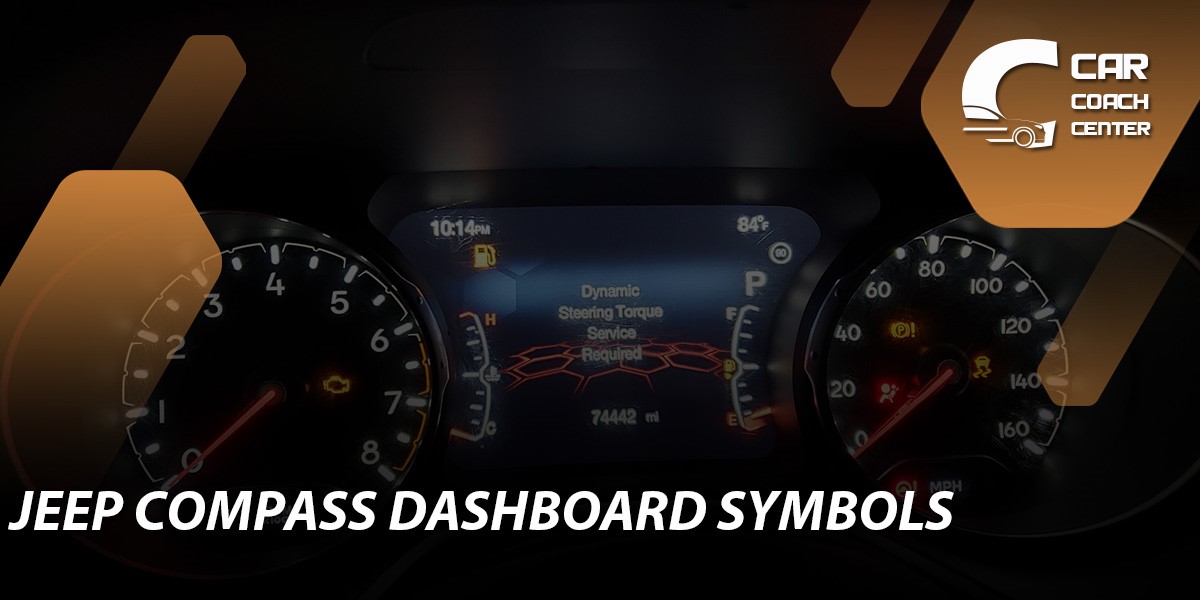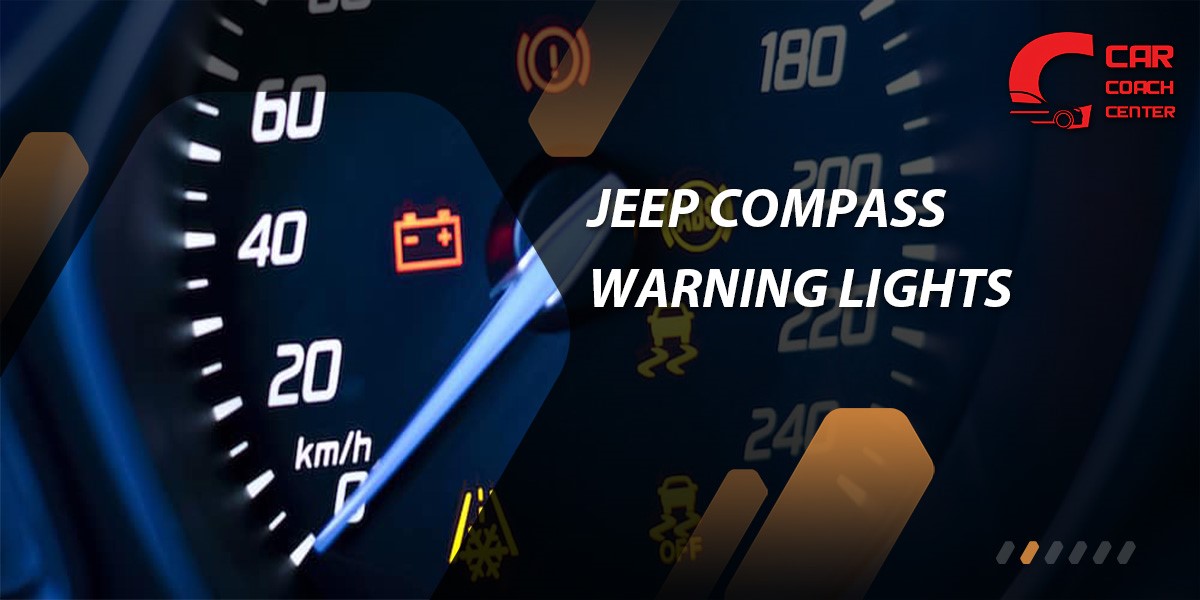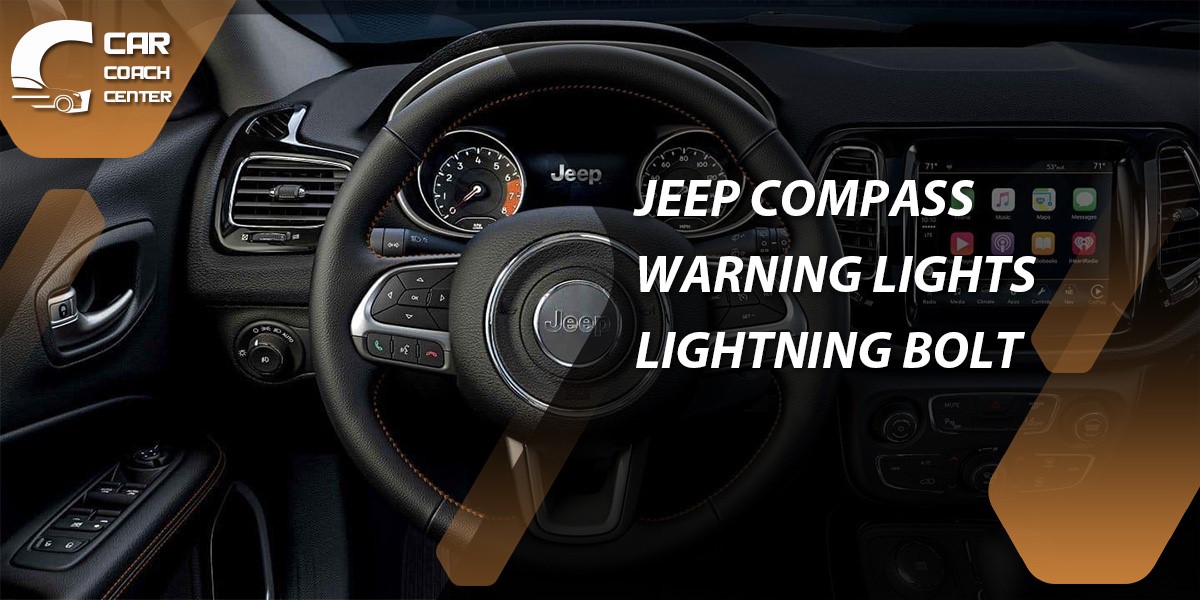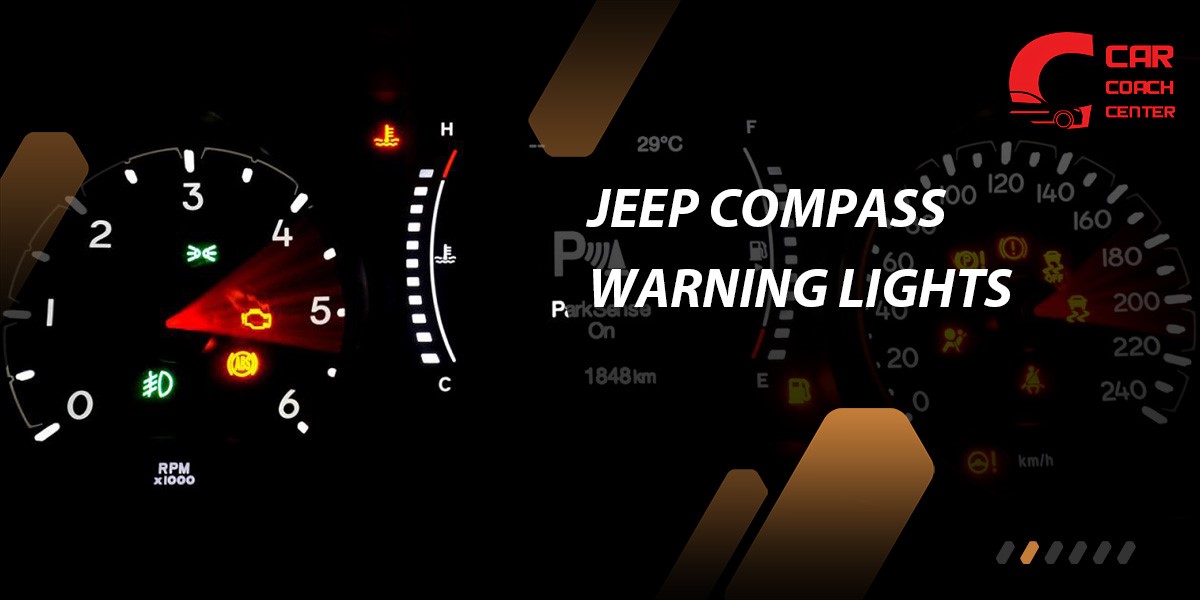Jeep Compass Warning Lights
As you hit the road with your trusty Jeep Compass, its dashboard becomes a kaleidoscope of colors, illuminated by an array of warning lights designed to keep you informed and safe. These tiny beacons of information can quickly become a source of confusion and concern if you need help understanding their meanings. Fear not, for this comprehensive guide is here to unravel the enigma of Jeep Compass warning lights.

Beyond the familiar symbols, subtle indicators might escape your attention, urging you to delve deeper into the unknown realm of automotive diagnostics. From the mysterious blinking lights that demand immediate attention to those you might overlook, we’ll shed light on the significance of each warning signal.
As we embark on this enlightening journey, you’ll gain the knowledge and confidence to navigate the complexities of your Jeep Compass’s warning lights. So, fasten your seatbelt, adjust your mirrors, and join us as we decode the secrets behind the dashboard’s mesmerizing display, empowering you to take preventative measures and ensure a smooth, worry-free driving experience.
Decoding the Dashboard: A Rainbow of Signals
The Jeep Compass dashboard is more than just a visually appealing array of lights; it is a sophisticated communication hub between your vehicle and the driver. Each warning light represents a crucial piece of information that demands your attention. Understanding the colors and their meanings is essential to decipher this dashboard symphony.
Red Warnings – Urgency in Action
The bold crimson glow of red warning lights demands immediate attention. Typically, these indicate severe issues that require urgent action to avoid potential damage or safety risks. Common red warning lights include the engine temperature warning, indicating that your engine is overheating, and the oil pressure warning, signaling low oil pressure, which can lead to engine failure. Seeing red on your dashboard should prompt you to pull over safely, turn off the engine, and seek professional assistance.
Yellow Warnings – Caution Ahead
Yellow or amber warning lights are less urgent than red but should not be taken lightly. These signals often indicate potential problems that must be addressed promptly to prevent further complications. Examples include the check engine light, triggered by various issues like a faulty sensor or emissions-related problems, and the tire pressure warning, alerting you to low tire pressure that can affect your vehicle’s handling and fuel efficiency. While not an emergency, yellow warnings should be inspected by a qualified mechanic at your earliest convenience.
Green Notifications – Informative and Ready
Unlike their red and yellow counterparts, green warning lights are more informational than alarming. For instance, the green “cruise control” indicator lets you know when this feature is active, enhancing your driving comfort during long trips. Additionally, a green “lights on” notification shows when your vehicle’s exterior lights are engaged, ensuring visibility and safety while driving at night or during adverse weather conditions.
Blue Notifications – Keeping it Cool
Blue warning lights are commonly related to the vehicle’s systems, such as the high beam indicator or the coolant temperature warning. The latter alerts you if your engine’s coolant temperature is too low, which can be particularly important during colder weather. Though more urgent than red or yellow warnings, blue notifications still require attention to maintain your vehicle’s optimal performance.

White Indicators – Illuminating Assistance
White warning lights generally provide auxiliary information, such as the activation of cruise control, the status of the front airbag system, or the use of high beams. These lights serve as helpful reminders or confirmations of certain vehicle functions, ensuring you know the car’s status while on the road.
Orange Warnings – Safety First
An orange warning light typically denotes a non-critical issue related to the vehicle’s systems, such as a worn brake pad or a faulty ABS system. While it may not require immediate action, it is advisable to address these concerns at your earliest convenience to ensure your Jeep Compass’s safety and optimal performance.
Mysterious Blinking: Unraveling the Enigma of Flashing Lights
As you traverse the roads with your Jeep Compass, you may encounter an intriguing sight on your dashboard: blinking warning lights. Unlike their steady counterparts, these flashing indicators add an element of urgency and uncertainty. Understanding the significance of these mysterious blinking lights is crucial for maintaining your vehicle’s health and ensuring a safe driving experience.
Rapid and Continuous Blinking: Immediate Attention Required
When warning lights blink rapidly and continuously, they signal an urgent issue that demands immediate action. One of the most critical examples is the blinking red battery warning light, which indicates a problem with the charging system.
Driving with a malfunctioning charging system can quickly lead to a dead battery and leave you stranded on the side of the road. When confronted with this blinking, it is vital to stop the vehicle safely, turn off the engine, and seek professional assistance to prevent further damage.
Intermittent Blinking: A Persistent Problem
If you notice warning lights blinking on and off intermittently, it could signify an ongoing issue that requires attention. The check engine light is a common example of an intermittent blinking light, often indicating a problem with the engine or emissions system. While the issue might not be as critical as a rapidly blinking light, it should not be ignored. Driving without addressing the underlying problem may lead to reduced fuel efficiency and potential damage to other engine components.
Alternating Blinking: Multiple Systems at Stake
When warning lights alternate between colors or symbols, it typically suggests multiple systems are affected. For instance, if you observe alternating blinking of the ABS (anti-lock brake system) and the traction control lights, it could indicate a potential issue with the vehicle’s braking system. This situation requires prompt attention, as compromised braking performance can jeopardize your safety on the road.
Blinking in Sync with Vehicle Functions: System Self-Checks
Some blinking lights are not indications of problems but rather a part of the system’s self-check mechanism. For example, when you turn the ignition key to “ON,” but before starting the engine, you may notice several warning lights, including the airbag and ABS light, briefly blinking. This self-check ensures that these safety systems are functioning correctly. Once the engine starts, these lights should turn off unless a problem is detected.
Blinking with Specific Conditions: Driving Dynamics
Certain blinking lights are associated with specific driving conditions. For instance, the blinking green light accompanying the “Eco” mode activation signifies improved fuel efficiency. Similarly, the blinking yellow light for the “Sport” mode indicates enhanced performance-oriented settings. These blinking lights are intentional and do not indicate any issues with your Jeep Compass.
External Factors: Light Reflections and Sensor Glitches
In some cases, blinking lights may not indicate any problems with your vehicle. Light reflections on the dashboard or temporary sensor glitches can cause false blinking. If you notice sporadic blinking that disappears quickly, it may be worth verifying if there is an actual problem or if it was caused by external factors.

The Sneaky Subtle Indicators: Warning Lights You Might Overlook
Amidst the warning lights adorning your Jeep Compass dashboard, some signals may appear inconspicuous at first glance, yet they hold valuable clues about your vehicle’s health. Overlooking these seemingly minor warning lights can lead to potential problems and compromise your driving experience. Let’s shine a light on these sneaky indicators to ensure you remain vigilant and proactive in maintaining your Jeep Compass.
The Tire Pressure Monitoring System (TPMS) Light: Preserving Traction and Efficiency
The TPMS light, often depicted as an exclamation mark inside a horseshoe-like symbol, signifies fluctuations in tire pressure. Ignoring this light could result in underinflated or overinflated tires, affecting your vehicle’s traction, handling, and fuel efficiency. Regularly check your tire pressure and fill them to the recommended levels to maintain optimal performance and safety.
Electronic Stability Control (ESC) Light: Stability in Motion
The ESC light, represented by a car with swerving lines, indicates the Electronic Stability Control system is engaged. This system helps maintain stability and control during challenging road conditions or sudden maneuvers. Overlooking this light might jeopardize your vehicle’s stability, especially in slippery or hazardous driving situations. Monitor the ESC light to ensure it remains active when needed.
Low Fuel Warning: Avoiding Fuel Runouts
While not as subtle as other warning lights, the low fuel indicator is often overlooked, leading to potentially running out of gas. Driving with low fuel levels can damage your fuel pump and result in inconvenient breakdowns. Treat the low fuel warning as a reminder to refuel promptly and avoid unnecessary risks.
Door Ajar Warning: Securing Your Vehicle
The door ajar symbol, typically depicted as an open car door, alerts you when a door is not fully closed. Overlooking this warning could lead to security issues, as an improperly closed door can compromise the vehicle’s safety and potentially lead to theft. Always ensure all doors are securely closed before driving.
Transmission Temperature: Protecting Your Transmission
The transmission temperature warning, depicted as a thermometer floating in liquid, indicates elevated transmission temperatures. Overlook this warning, and you risk overheating your transmission, leading to premature wear and potential failure. Address the issue promptly by pulling over, allowing the transmission to cool down, and checking the fluid level.
Airbag Status Indicator: Ensuring Safety Systems
The airbag status indicator monitors the vehicle’s airbag systems, often represented as an image of a seated person with an airbag deploying. If this light remains illuminated or flashes, it could indicate a problem with the airbag system, potentially compromising its effectiveness in the event of an accident. Regularly inspect your airbag status indicator to ensure all safety systems function correctly.
Navigating the Unknown: What to Do When Multiple Warning Lights Illuminate
As you glance at your Jeep Compass dashboard, you may encounter a perplexing scenario: multiple warning lights illuminating simultaneously. Seeing a constellation of colored symbols can be overwhelming and leave you questioning what to do next. However, staying calm and following a systematic approach can help you confidently navigate this uncertain situation.
Remain Calm and Observe
First and foremost, take a deep breath and remain calm. Panic won’t solve the issue, but a composed mindset will help you think clearly. Observe the warning lights carefully to identify which ones are lit and their colors. Understanding which systems are affected can provide valuable clues about the nature of the problem.

Determine the Severity
Not all illuminated warning lights require immediate action. Categorize the warning lights based on their urgency. Lights such as the check engine light or the red oil pressure warning that demand immediate attention should be treated as high-priority. While not as urgent, yellow lights still require prompt action to prevent potential issues.
Check for Common Causes
Certain issues can trigger multiple warning lights simultaneously. For example, a faulty alternator can cause the battery warning light to illuminate, leading to low voltage in the electrical system, which in turn triggers other warning lights. Assess whether any known issues or recent maintenance might be connected to the multiple warnings.
Safety First
If you encounter multiple warning lights while driving, prioritize safety. Pull over to a safe location, away from traffic, and turn off the engine. Leaving the vehicle idling with multiple warning lights illuminated could exacerbate the problem and cause further damage.
Check the Owner’s Manual
Your Jeep Compass owner’s manual is a valuable resource during such situations. It provides information about each warning light’s meaning and suggested actions. Take a moment to refer to the manual for guidance on how to proceed with the specific combination of warning lights you are facing.
Professional Assistance
When confronted with multiple warning lights and unsure about the cause, it’s best to seek professional help. Contact a certified mechanic or your nearest Jeep service center for expert diagnosis and repairs. They have the tools and expertise to efficiently identify and address complex issues.
Avoid Resetting the Dashboard
Resetting the dashboard to turn off warning lights without addressing the underlying problem is not a solution. It might temporarily remove the illuminated lights but won’t fix the issue. In fact, it can make diagnosing the problem more challenging for professionals.
Conclusion
In conclusion, understanding Jeep Compass warning lights is essential for every Compass owner to ensure a safe and reliable driving experience. By decoding the dashboard’s rainbow of signals, unraveling the mystery of flashing lights, and acknowledging the importance of seemingly subtle indicators, drivers can take proactive measures to maintain their vehicle’s optimal performance.
Additionally, familiarity with Jeep Compass-specific warning lights empowers drivers to fully utilize the vehicle’s advanced features and capabilities. Remember, preventative measures such as regular maintenance, monitoring fluid levels, and practicing responsible driving can keep warning lights at bay, reducing unexpected surprises during your journeys.
For comprehensive information and expert advice on Jeep Compass warning lights and maintenance tips, visit carcouchcenter.com, where you’ll find valuable resources to keep your Compass running smoothly and safely on any adventure. Embrace these insights and take charge of your Jeep Compass’s well-being, ensuring a worry-free and enjoyable ride for years.
Why is my Jeep Compass check engine light on?
The check engine light can indicate various issues, such as faulty sensors, emission problems, or engine issues. It's best to have it professionally diagnosed to determine the exact cause.
What should I do if multiple warning lights illuminate simultaneously?
Stay calm, prioritize safety, and move to a safe location. Consult your owner's manual to understand the meanings of the warning lights, and seek professional assistance to identify and address the underlying issues.
How can I prevent warning lights from illuminating frequently?
Regularly maintain your Jeep Compass, monitor fluid levels, drive responsibly, and promptly address any issues indicated by gauges or warning lights.


